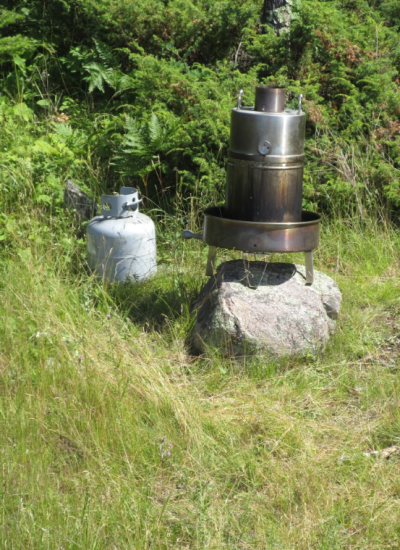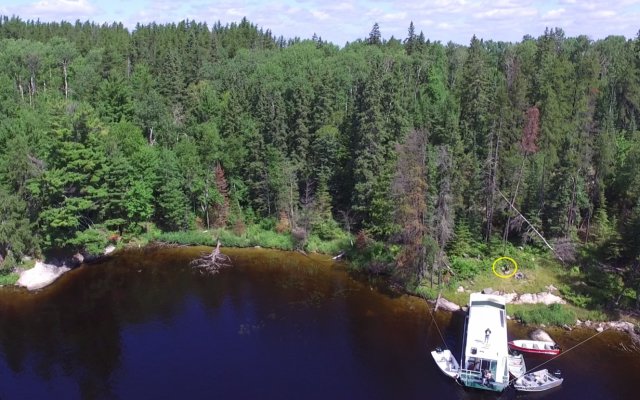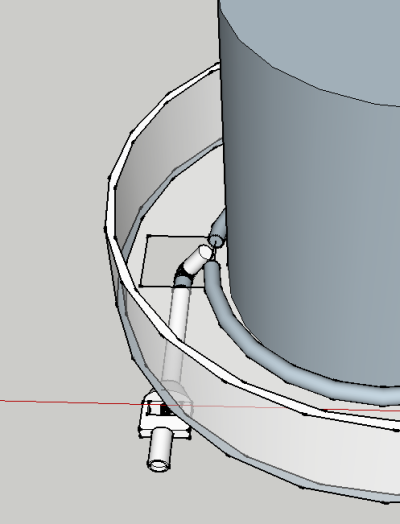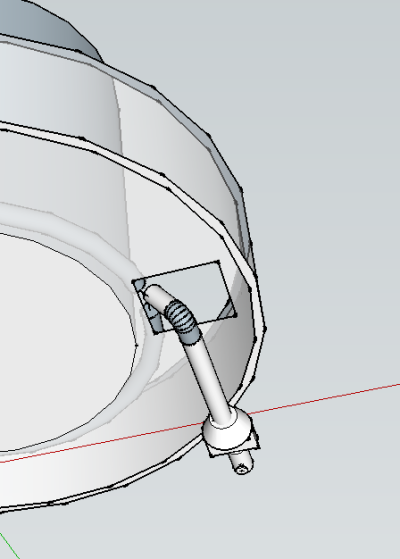Sunset
Give me a museum and I'll fill it. (Picasso) Give me a forum ...
I had to look up to see what an orion cooker is normally like to understand what you did.
I have to say that is a really good job.
The only thing I didn't like much was the copper pipe was too far out of the cooker so the propane burner adjustment knob ended up sticking far out (tripping hazard).
Were you thinking you needed a flap or adjustable hole on the copper pipe to allow some air to mix in before it gets to the burning part ?
Perhaps you want a few clamps to hold the copper pipe a constant distance from the side of the cooker and the bottom where it currently rests. Quick example:

I have to say that is a really good job.
The only thing I didn't like much was the copper pipe was too far out of the cooker so the propane burner adjustment knob ended up sticking far out (tripping hazard).
Were you thinking you needed a flap or adjustable hole on the copper pipe to allow some air to mix in before it gets to the burning part ?
Perhaps you want a few clamps to hold the copper pipe a constant distance from the side of the cooker and the bottom where it currently rests. Quick example:

 and trying to keep the venturi kind of away from the flames, it did end-up a little more Rube Goldbergish than I'd like. The clamp idea is something to look at. So far, I've avoided drilling the stainless, but that's something I could do.
and trying to keep the venturi kind of away from the flames, it did end-up a little more Rube Goldbergish than I'd like. The clamp idea is something to look at. So far, I've avoided drilling the stainless, but that's something I could do.




 Turkey at 7 minutes per pound, six full racks of baby back ribs in 1 hour 25 minutes, brisket at 27 minutes per pound etc. "Fill it, light it, forget it". No need to spend hours and hours tending a "slow" smoker. (No affiliation just a very satisfied user for many years).
Turkey at 7 minutes per pound, six full racks of baby back ribs in 1 hour 25 minutes, brisket at 27 minutes per pound etc. "Fill it, light it, forget it". No need to spend hours and hours tending a "slow" smoker. (No affiliation just a very satisfied user for many years).